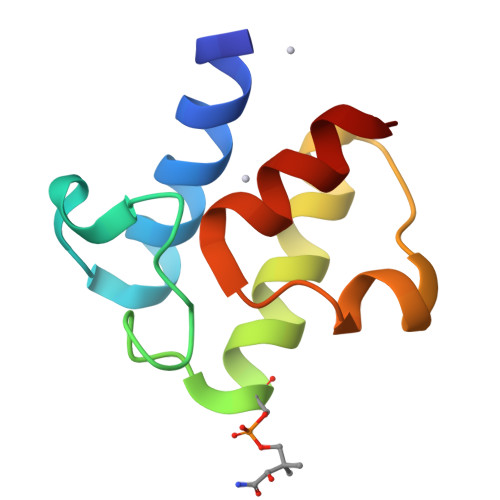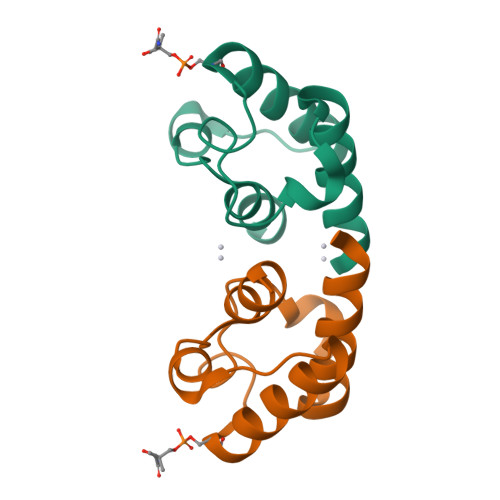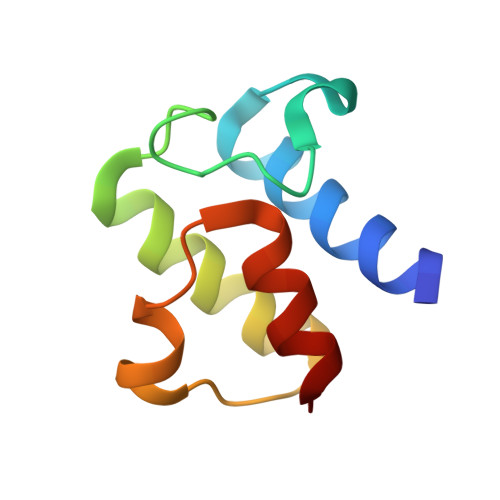A Novel Role of Malonyl-Acp in Lipid Homeostasis.
Martinez, M.A., Zaballa, M.E., Schaeffer, F., Bellinzoni, M., Albanesi, D., Schujman, G.E., Vila, A.J., Alzari, P.M., De Mendoza, D.(2010) Biochemistry 49: 3161
- PubMed: 20201588
- DOI: https://doi.org/10.1021/bi100136n
- Primary Citation of Related Structures:
2X2B - PubMed Abstract:
The FapR protein of Bacillus subtilis has been shown to play an important role in membrane lipid homeostasis. FapR acts as a repressor of many genes involved in fatty acid and phospholipid metabolism (the fap regulon). FapR binding to DNA is antagonized by malonyl-CoA, and thus FapR acts as a sensor of the status of fatty acid biosynthesis. However, malonyl-CoA is utilized for fatty acid synthesis only following its conversion to malonyl-ACP, which plays a central role in the initiation and elongation cycles carried out by the type II fatty acid synthase. Using in vitro transcription studies and isothermal titration calorimetry, we show here that malonyl-ACP binds FapR, disrupting the repressor-operator complex with an affinity similar to that of its precursor malonyl-CoA. NMR experiments reveal that there is no protein-protein recognition between ACP and FapR. These findings are consistent with the crystal structure of malonyl-ACP, which shows that the malonyl-phosphopantetheine moiety protrudes away from the protein core and thus can act as an effector ligand. Therefore, FapR regulates the expression of the fap regulon in response to the composition of the malonyl-phosphopantetheine pool. This mechanism ensures that fatty acid biosynthesis in B. subtilis is finely regulated at the transcriptional level by sensing the concentrations of the two first intermediates (malonyl-CoA and malonyl-ACP) in order to balance the production of membrane phospholipids.
Organizational Affiliation:
Instituto de Biología Molecular y Celular de Rosario (IBR-CONICET), Facultad de Ciencias Bioquímicas y Farmacéuticas, Universidad Nacional de Rosario, Suipacha 531, 2000 Rosario, Argentina.


















